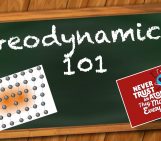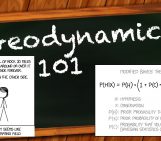
The sequence of events before continental crust formation has long been contested. Numerical simulations performed by Rozel and colleagues imply that the key to the puzzle could lie in the intrusive magmatism.
Despite several decades of research on the topic, the trigger of proto-continental crust formation on early Earth remains an enigma. However, magmatic processes may hold the key to unravelling what controlled the pre-plate tectonic dynamics of Earth.
The hidden shreds of evidence narrating Earth’s geological history are located deep within the interiors of old and thick cratons or even deeper in the Earth’s mantle – there lies the answer to the non-trivial question: how does the Earth machine work? Synthesizing these clues requires gathering a vast array of data, and geodynamic simulations are required in an attempt to reproduce the processes that gave rise to continents on early Earth.
Writing in Nature, Antoine Rozel (ETH Zürich) and colleagues provide a first global picture of Archean geodynamics by exploring continental crust formation on the early Earth with numerical modelling. Attempting global simulations of the early Earth is challenging as the models must satisfy petrological constraints and must be able to explain field data in Archean (~4 to 2.5 billion years ago) provinces.
Rozel and colleagues use cutting-edge software (the global convection code StagYY) to investigate different magmatism scenarios. Eruptive or intrusive magmatism differs in the way in which magma is deposited, namely cold at the surface or warm at the bottom of the crust. This is important as the primordial continental crust can only be produced in small windows of pressure-temperature conditions.
Rozel and colleagues simulate the thermomechanical evolution of early Earth (0–1 billion years), and find that the tectonics model dominated by volcanism is not able to produce Earth-like primordial continental crust, because of a too low crustal temperature. In contrast, a tectonics regime dominated by intrusive magmatism results in a higher crustal temperature, resulting in a stable continental crust. Commenting on the research, Antoine Rozel said:
Our models explain how continental crust might have been formed.
This work illustrates that the sophistication of numerical models has now reached a level where crusts of various types as well as depleted mantle can form self-consistently. Such models have the potential to distil geological and geophysical knowledge into complex process models that allow geoscientists to investigate a very exotic, pre-plate tectonics Earth. However, the specific results of Rozel and colleagues depend on the details of the pre-defined hypothesis assumed in their model. Specifically, they assume two critical parameters: the eruption efficiency (as opposed to intrusion efficiency) and the strength of the lithosphere.
Via a systematic parameter study, they found that a volumetric melt eruption efficiency of <40% leads to the production of the primordial crustal, both in terms of quantity and composition. Despite inevitable uncertainties, co-author Charitra Jain (ETH Zürich) said:
The production of the expected amount of the main primordial crustal compositions is in agreement with data constrained from fieldwork.

The impact of the emplacement mechanism (eruption vs. intrusion) on the geotherm (modified from Rozel et al., 2017, Nature – doi: 10.1038/nature22042). (a) 100% eruption efficiency; (b) mix of eruption and intrusion and (c) intrusive emplacement only. The grey envelopes in the right-hand-side plots show the temporal evolution of the geotherm.
Whether or not the formation of primordial crust gave birth to plate tectonics will no doubt remain contested. Scientists have previously suggested numerous ways to understand when and how plate tectonics began. For instance, the apparently quiescent phase between the Paleo- and Meso-Archean (~3.2 billion years) seems to have been followed by a geological era of intense deformation. This has been interpreted as the onset of plate tectonics, although this question is beyond the scope of the work presented here.
Rozel and colleagues have thus provided a fresh perspective on the long-standing problem of understanding the sequence of events that led to the formation of continental crust on early Earth. However, whether these events have driven the initiation of plate tectonics is likely to remain controversial for some time. An important missing ingredient in this study is the formation of strong continental roots (cratons), which is now under investigation in the Geophysical Fluid Dynamics team at ETH Zürich.
REFERENCE: Rozel, A. B., Golabek, G. J., Jain, C., Tackley, P. J., & Gerya, T. (2017). Continental crust formation on early Earth controlled by intrusive magmatism. Nature, doi: 10.1038/nature22042




